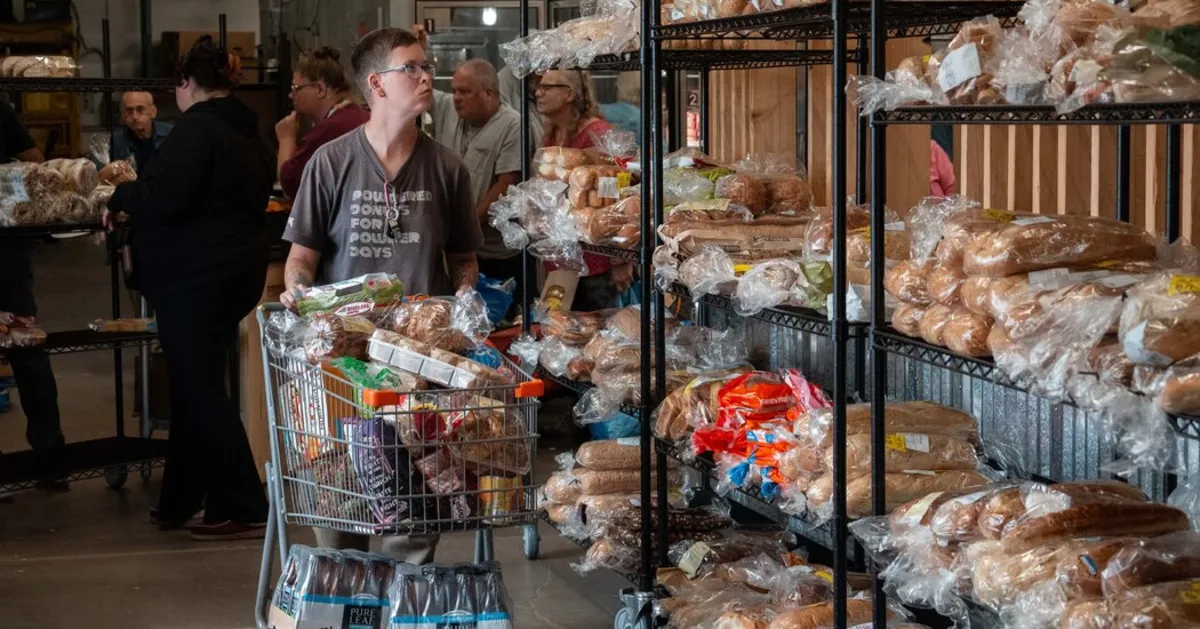
The Trump administration has firmly defended its controversial decision to cease payments for food stamps during the ongoing government shutdown. Administration officials argue that a combination of legal, technical, and budgetary constraints prevent the release of available funds to support millions of low-income Americans in November. In new court filings submitted late Wednesday, it was revealed that the administration has billions of dollars left over in various federal accounts, which could potentially cover the full costs of the Supplemental Nutrition Assistance Program (SNAP) for the upcoming month.
Despite the availability of these funds, lawyers representing the Justice Department indicated that the administration is unable or unwilling to utilize them, leaving approximately 42 million food stamp recipients vulnerable to cuts in their benefits starting on November 1. The Trump administration has repeatedly emphasized that there are legal barriers to reallocating existing funds to SNAP and that there are technical challenges in processing payments swiftly. Additionally, the Agriculture Department has cited other budgetary constraints that must be considered.
This situation sets the stage for a critical hearing scheduled for Thursday morning in Massachusetts, where over two dozen states are seeking a court ruling to compel the Trump administration to reprogram its budget and provide full funding for food stamps before the impending deadline. In its legal documents, the administration acknowledged that the suspension of food stamp benefits would create “a difficult situation for millions of Americans.” However, they maintain that the court lacks the authority to intervene.
The Trump administration's decision not to act highlights a broader strategy during a fiscal impasse that has now extended into its fifth week. President Trump has selectively chosen to reallocate federal budget resources, prioritizing programs that align with his political agenda while allowing certain vulnerable populations to face the risk of serious harm due to the shutdown. For the estimated one in eight Americans relying on the food stamp program, the looming threat of hunger and financial distress is very real, as SNAP benefits are set to cease starting on November 1.
On average, SNAP benefits amount to around $187 per month, costing the federal government approximately $8 billion monthly. This funding is replenished each year as part of the budget process. Additionally, SNAP maintains a reserve fund for emergencies or shortfalls, and many legislators from both parties had urged the Trump administration to utilize this reserve—currently totaling about $5 billion—if the shutdown extended into November. Initially, the Agriculture Department had indicated its intent to draw on these contingency funds to prevent a disruption in food stamp benefits.
However, the Trump administration abruptly changed its stance earlier this month, declaring that it could not legally access these reserves except in natural disaster scenarios. This decision prompted widespread panic and backlash, leading 25 states and the District of Columbia to file a lawsuit arguing that the federal government has both a legal and moral obligation to ensure food aid is provided.
In its latest filings, the Trump administration reiterated its opposition to utilizing these funds, stating that the law prohibits them from transferring or spending money that Congress did not specifically appropriate or in ways not intended by lawmakers. They argued that this limitation rules out many of the funding options proposed by states during the shutdown. Officials expressed concerns that complying with a court ruling in favor of the states could lead to operational complications and delays in food stamp provisioning, possibly resulting in beneficiaries receiving less than half of their normal monthly amounts under SNAP.
The administration also contested the use of approximately $16.8 billion in leftover funds from nutrition programs, partially financed by customs collections, to support SNAP in November. Interestingly, this same pool of funds had previously been leveraged to prevent interruptions in another federal food assistance program, known as WIC, during the shutdown. Officials acknowledged this week that several differences exist that would preclude them from applying the same logic to SNAP.
The Trump administration's assertions starkly contrast with its actions throughout the shutdown, where billions of dollars have been reallocated to maintain payments for troops and law enforcement, including those involved in the administration’s immigration policies. Unlike those government functions, SNAP has long been a target for cuts by President Trump and congressional Republicans, who have argued that the program suffers from waste, fraud, and abuse.